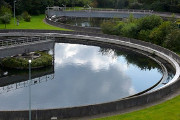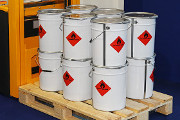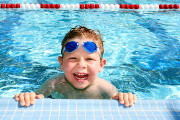For all chlorine treated pools: to achieve a healthy and hygienic pool you are required to maintain a minimum of 1 ppm (parts per million) of chlorine and up to a maximum of 5 ppm of chlorine in the pool water at all times.
This can be achieved by a variety of types of chlorine (i.e. granular, liquid, tablets), maintaining chlorine levels, combined with sufficient filtration will provide a healthy and trouble free pool.
Just these two aspects of pool treatment are the most important - sufficient chlorine and sufficient filtration.
All packs of chlorine products have a recommended dose rate, however this is just an indication of how much an average pool might require. A variation in the amount of usage the pool gets and a host of other factors influence the amount of chlorine a pool requires. So how do we know? It is simple; we test the pool for residual or free chlorine. That is, the chlorine that is unused and still remaining in the pool water.
So when we add the chlorine, preferably each night when all the swimming is completed, the chlorine level might increase to 5 ppm. Overnight and the next day the chlorine works on the impurities in the pool water, cleaning the pool water and the chlorine is progressively used up.
If we test the pool water just before our next dose of chlorine, we can evaluate if we are adding enough chlorine to last the distance. We want to achieve at least 1 ppm of chlorine before we replenish the supply back up to that 4 to 5 ppm region. This is referred to as the dose cycle and is preferably 24 hours, however in low usage pools this can be extended out to a number of days. The same principle of testing just before you dose still applies. That is, checking if we have maintained that all important reserve of 1 ppm chlorine.
If the chlorine level drops to zero, that is when the problems start with algae getting a foot hold and cloudiness of the pool water ensuing. So avoid this if you can.
Based on the dose cycle - if your test result is:
|
Chlorine level |
Pool Treatment |
|
4 to 5 ppm (or higher) |
No additional treatment required. A high level of chlorine may irritate the eyes (if a lot of contact) and may also bleach sensitive swimming apparel. |
|
2 to 3 ppm |
OK level and is fine to swim in. However the amount of chlorine product you are adding daily can be decreased. Decrease by one third. |
|
0.5 to 1.5 ppm |
Ideal level of chlorine. Continue with the same amount of chlorine product. |
|
0 ppm |
Problem time. Increase chlorine dosing otherwise problems will start. Double the previous day dose of chlorine product. |
Recommendations, suggestions or statements made are intended for the assistance of our customers. They are based upon our experience and judgement but must not be regarded as amounting to a legal warranty or as involving any liability on our part and must be read in conjunction with and subject to our conditions of sale.







